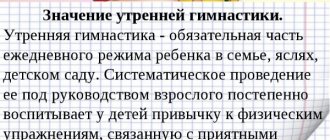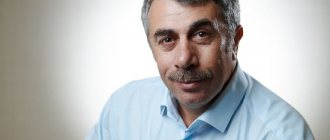As ivbg.ru reported, on December 7, 2022, a shooting occurred at the Ryazansky MFC on 1st Novokuzminskaya Street in Moscow. Two people were killed and four more were injured. Including a 10-year-old girl named Sophia.
You might be interested
“He turned out to be tasteless”: we tell how an accident with a severed head near Vsevolozhsk led the police to a murderer and cannibal
As ivbg.ru reported, the mutilated body of a man fell out of the trunk of a car after an accident on November 20 at about 04:30 at the 24th kilometer of the highway...
22.11.2021 5368
The editors of ivbg.ru show a video of the shooting directly from the scene, publish photographs, name the names of the victims and those killed, and also tell how it all happened, and how it happened that the person whom the media called the killer was at that time tens of kilometers from the place tragedy.
What is composition?
Composition is the art of arranging objects in a frame. In fact, there are shapes and proportions that people find pleasing, but the film itself also has to tell a story. The placement of your subjects and actors in the frame can add meaning to your story by highlighting some elements and leaving others in the background. In a big-budget Hollywood film, the director has an assistant who handles the composition of the shot. In small budget films, the director often performs both functions.
“Framing and editing define the path where the viewer's eye looks. It may not be too much of an exaggeration to say that the director really controls the viewer's attention." — Alexander Mackendrick “On Cinema”
If you do everything right, then absolutely every frame of your film can be taken and hung in a frame on the gallery wall. It's a tough task, and few people succeed at it without a lot of time, big budgets, great editors and patient investors. Your budget and time constraints may prevent you from doing this, but there are things you can do from the start to make sure your film looks the best it can.
Movement of frames... movement.
Another obvious thing that affects the composition of a film's frame is that things not only move in it, but sometimes through it, and often the camera itself moves. This means a lot of rehearsals. Actors moving across the set must pass through their cues at extremely precise timing, and your camera operator must accommodate the movement across the set and the movement in the frame while maintaining the pleasing placement that drives the story.
See also: Animation Basics in Adobe Premiere Pro
The rules—or rather, guidelines—of composition apply to film, painting, and still images.
What does this mean? That you can read a book about still image composition and use it as the basis for your film composition? Absolutely. The rules—or rather, guidelines—of composition apply to film, painting, and still images.
Rule of thirds
If you take just one thing away from this article, it would have to be the rule of thirds. This is the basic rule of composition. Divide the screen into thirds horizontally and vertically, like in a game of tic-tac-toe, and then your key objects should fall at the intersection of two of these lines. Some filmmakers adhere to this rule more than others, but it is very difficult to find a film that does not use this rule.
We said earlier that people are vertical and movie screens are horizontal - this means that in order to get a framed person, you either need to make them very small or crop them. Both of these methods are perfectly acceptable. Let's take a look at Ridley Scott's Blade Runner. In this close-up of Harrison Ford, Scott and Cinematographer Jordan Cronenweth decided to cut him off at the shoulders and top of his head so that the actor's gaze would be at the intersection of the top horizontal line and the right vertical line of our imaginary frame.
Unlike the real world, in cinematic and photographic composition, you can chop off the top of someone's head with impunity. This does not apply to people's chins - the chins should remain in the frame unless you cut off an equal portion of the top of the head.
The first step is diagnosis.
If there is simply no sound, it is easier to “teach” the tongue and lips to take the desired shape for its pronunciation than if there is already a distorted pronunciation. Relearning is always more difficult, especially if it has been consolidated for decades, as is sometimes the case with adults.
The first thing the speech therapist will do at the appointment is to determine which sounds are being pronounced incorrectly and what exactly needs to be done to help you change the situation. The process will be easier and simpler when everything is fine from a physiological and audiological point of view. That is, the organs of speech and hearing function normally.
But it also happens that a person cannot pronounce a complex sound correctly for other reasons. For example, a short frenulum makes it impossible to fully place the tongue in the upper position, which will not allow one to master “r”, “w”, “w”, “l”. Violation of phonetic-phonemic perception will complicate the differentiation of similar sounds: “s” - “z”, “p” - “b”, “d” - “t”. General hearing loss is also an obstacle that makes it difficult to form correct speech.
A combination and consideration of all factors is necessary to assess the amount of work to be done, find out whether consultations with other specialists are needed and draw up an individual plan for correcting sound pronunciation. Sometimes this plan can be very short and consist of five meetings; some sounds (for example, “l”), with the help of a specialist, can “stand up” already in the first lesson, and then four more will be needed to be able to pronounce a difficult sound in speech.
Eyes are an important thing.
We look at people's eyes. We instinctively look at how other people look. We have a deep belief that the person inside the body is accessible through the eyes - and this is universal. When your cat or your dog wants to communicate with you, they look at your eyes, and they don't read any books on psychology. When you frame a shot, if the eyes are in focus, then you can sacrifice a lot of other things that are out of focus.
See also: How to create captions at the bottom of the screen that aren't boring.
In this Raiders of the Lost Ark shot, Harrison Ford returns, with the actor completely obscured, only visible in silhouette except for his right eye, which looks out with a wariness that, along with his distinctive hat, brings personality into the frame. And of course, by “random coincidence” the eye also ends up at the intersection of imaginary lines. Also notice the sloppy white areas on the left and right, they serve to balance the frame. “Frame balance?” You ask.
Stage three – automation in speech.
Since you are already familiar with this term, we will mention it here, because it best explains the last step towards correct and beautiful pronunciation. So, as you already understand, you have to learn how to use your new sound in speech, so that it turns out easily and naturally.
Now you will always and everywhere have to make sure that the acquired skills are put into practice and that your new sound pleases your ears. The sound that has been delivered and worked out will gradually take root and will never confuse you or attract the attention of others.
Share:
Find out more about the Center's services and sign up for a consultation or lesson
You can call (812)
640-90-77
, or by filling out the form below.
Balance and symmetry
Think of your frame as a shadow field in which you place objects, and which is strictly in the center. Balancing the left and right sides usually gives a feeling of harmony, while an unbalanced frame creates tension. If you go against the rule of thirds, sometimes a completely symmetrical frame, with the main subject in the center, can be used extremely effectively. Some directors are slaves to symmetry and when used correctly this technique can be extremely powerful. One of the most exciting proponents of symmetry was Stanley Kubrick, who abandoned the rule of thirds and replaced it with an obsessive commitment to central framing and symmetry, giving us incredibly powerful images that depict order so perfect that it becomes somewhat menacing.
In this example from Pulp Fiction, we have Bruce Willis on the left side of the screen, but the frame is balanced by license plates. You'll notice the same thing in both shots from Blade Runner.
See also: Do you know what chromakey is? Learn the secrets of working with chromakey in 5 minutes
Stage two - from sound to phrase.
Gradually, step by step, you will learn to insert sound into speech. Articulatory gymnastics is still your friend and assistant, but it’s becoming easier and easier for you to reproduce the problematic sound. It's time to move on to syllables, honing the connection of a consonant with all vowels in exercises. More precisely, with those that correspond to the area of your work with a speech therapist, we remember that the sound is not equal to the letter. If you master [r], then it will be ra-, ro-, ry-, ru-, ry-, and if [ry] – re-, ri-, ryu-, rya-, ryo-.
Then we slowly move on to mastering the pronunciation of a difficult sound at the beginning of a word, at the end and in the middle, we begin to combine it not only with vowels, but also with consonants. During classes, a speech therapist will help you stay on top of the “correct” sound and teach you to hear yourself.
The specialist will also select exercises and sayings in accordance with your successes and in the sequence necessary for automation. So, it seems that you are unfamiliar with this professional term, now we will explain. Automation is precisely the process in question, designed to bring your new skill to perfection, to a state where it no longer requires any effort, when it becomes as natural as breathing.
Your homework will expand and include more and more new tasks. For example, pronounce clearly and correctly, highlighting [r]:
Ra-ra-ra. Here is a deep hole.
Ru-ru-ru. I take the axe.
The main thing is not to stop there. If you have reached the point of pronouncing the sound in words, this does not mean that the work is finished. Very often at this stage, correct pronunciation requires increased concentration of attention, and the sound clearly stands out from the rest of the speech. Therefore, we continue to attend classes and be sure to train at home, preferably every day. And now - you can already pronounce not only words and syllables, but also entire phrases, including tongue twisters.
Remember “Carnival Night”, where the main character, with a broom in her hands and nuts on her cheeks, practiced saying clearly: “The cuckoo bought a hood, how funny is it in the hood”? In the case of [r], you may be asked to pronounce the following phrases:
Karl stole corals from Clara, Clara stole the clarinet from Karl, if Karl had not stolen the corals, Clara would not have stolen the clarinet from Karl. There is grass in the yard, there is firewood on the grass, don’t cut wood off the grass in the yard.
So, it seems, having read all of the above, you have come to the conclusion that this is not for you and it takes years of work to get the desired correct and beautiful speech. In fact, everything is not so scary. Most often, at the very beginning of working with a speech therapist, the first successes appear, and the pace of progress in the work can be very fast, and in a month or two of hard work you can add the sound [r].
Leading lines
We follow lines like roads. Leading lines are usually imaginary lines that move from one object to another to draw our attention from the main object of focus to a secondary one. Going back to Ridley Scott's Blade Runner, we have a perfect example of leading lines, and this time they actually are lines. The railing directs our attention directly to the people on the left side of the screen. Note also the strong use of the rule of thirds and the post in the foreground to ensure balance.
Identities of the dead and injured
As a result of the attack, 34-year-old MFC administrator Vladimir Shemenev and security guard Alexey Ruzlev were killed.
Photo: Vladimir Shemenev, Instagram
Moscow Mayor Sergei Sobyanin said that Ruzlev “protected visitors from the killer with his chest.”
Four people were injured: 10-year-old Sofia Kozak – a tangential gunshot wound to the neck; 33-year-old Zainab Taimazova – the wound does not open (either the chest or the back); 34-year-old Evgeny Kondratyev - gunshot wound to the arm, 65-year-old Lyubov Titova - the wound does not open (either the chest or the back).
The adults were taken to the Research Institute named after. Sklifosofsky, and the child to the Morozov Children's Hospital.
Later, a number of media reported that the 10-year-old girl died from her wounds in the hospital. Some of them link to the Moscow 24 telegram channel and the Mash . However, this post either did not appear in telegram channels or they were deleted. The post about the death of the child was preserved only in the Mash group on VKontakte .
The injured girl's name is Sofia K. She received a gunshot wound through the neck on the right within the soft tissues. Doctors assessed her condition as moderate and stitched up the wound. The operation was “mostly cosmetic,” according to the chief physician of the Morozov Hospital, Valery Gorev.
At the time of preparation of publication, all those injured during the shooting at the MFC are alive.
Depth of field
The camera can highlight what's important and take focus away from other things that aren't as important. This is done using depth of field - the area of the frame that is in focus. Depth of field can either be deep, meaning everything is in focus - like Kubrick's image from 2001 - or it can be shallow, meaning little is in focus - like shots from Harrison Ford's Blade Runner and Raiders from the Lost Ark." Also note that in the close-up Ford in "Blade Runner" he uses the focus in the background to balance the frame.











